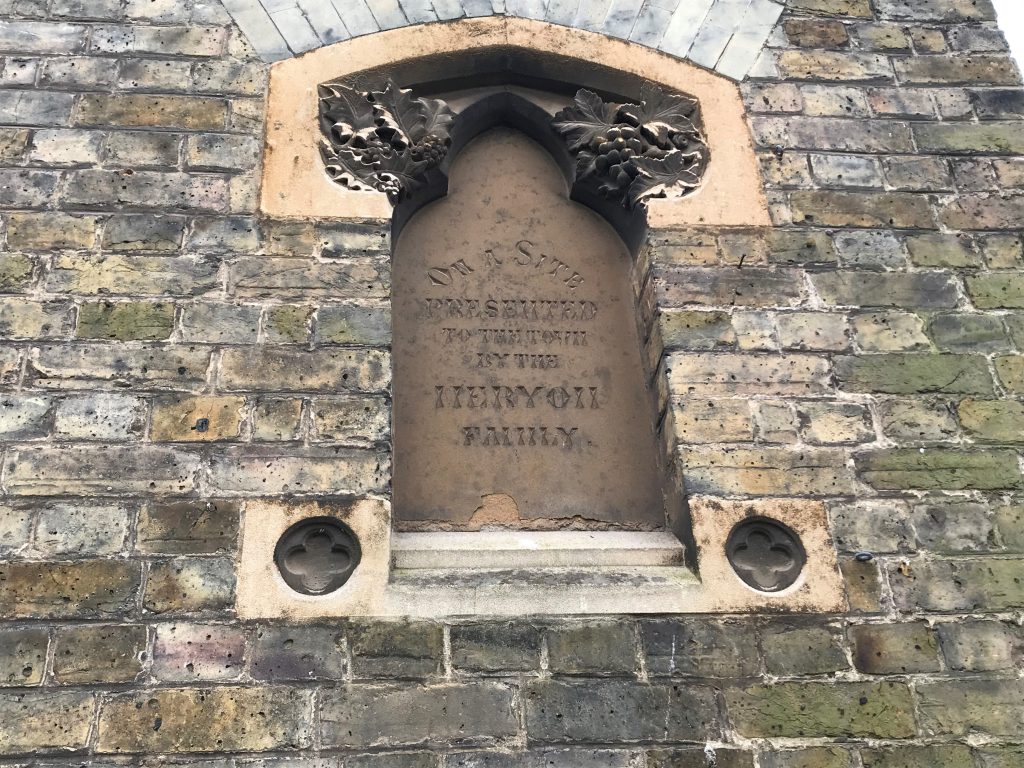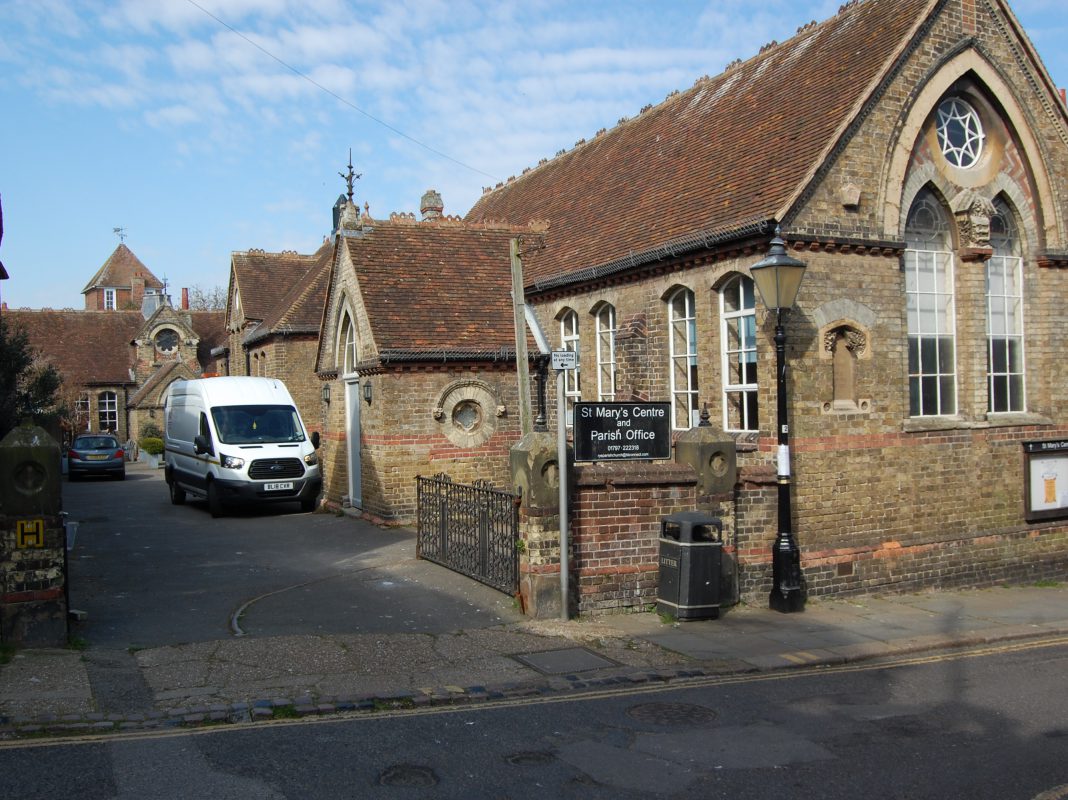Around the time of the Millennium, it became known that Hastings College was seeking to raise funds by the sale of its Adult Education Centre and Library complex in Lion Street – now home to the soon to re-open Kino Cinema and St Mary’s Centre.
Rye Conservation Society was concerned that the loss of these two facilities in the centre of town would cause hardship and loss of cultural amenities for residents so it responded promptly by inviting Edmund Bird, who was at the time Heritage Adviser for London, to apply to English Heritage for Listed Building status.
This was duly granted in May 2001 (Grade II) on the basis of the historic and architectural significance of the group of buildings and this effectively prevented the demolition of the whole site, though planning permission for partial demolition could not be ruled out – as it later transpired.
A campaign team was quickly formed to find grounds upon which redevelopment could be reasonably and successfully resisted and our first line of defence was to seize the moral high ground, which gained immediate backing from the citizens of Rye. In the public mind, this was something owned by the whole community which should not be surrendered without a fight.
Civic opposition was vociferous, especially when Sue Middlehurst, the Principal of Hastings College declared at the Annual Town Meeting meeting held in the Rye Community Centre on Conduit Hill that “The deal is done and dusted.”
History of the site

The site had formerly been owned in the C19th by the Meryon Family (as part of the Red Lion Inn, destroyed by fire in 1873). By bequest made that same year, the property was conveyed to the Board of Education for the schooling of poorer children of the parish.
However, a conditional clause, (legally known as a reverter) required that the land be re-conveyed to the donors or their heirs in the event that it was no longer required for its original purpose. Such clauses were once common in charitable bequests, but were limited in 1987 by Act of Parliament which disallowed the right of reverter if not claimed within 12 years of the date that the bequest’s intended use had effectively ceased. It would then become statute-barred.
It could be argued that the transfer of educational facilities from Lion Street to other schools in the town effectively terminated their use for the original purpose. On the other hand it was also arguable that the educational purpose had continued because the buildings were still in use as a Further Education Centre and town library.
Hastings College had realised this possible defect of title and had sought legal clarification in 1961, and again in 2001, but the Lincoln’s Inn barristers’ opinions were indecisive and did nothing to resolve the issue. Curiously and by coincidence, a Meryon family gathering had reportedly taken place in Rye the previous year, with one family member coming from Australia and another from the Birmingham area, without the matter being publicly raised.
Enter Rye Partnership
At this point, the Rye Partnership entered the scene as an apparent ‘white knight’ to undertake negotiations with the College and in June 2004, Mark Evershed, development director for Rye Partnership, informed a specially called meeting that the Partnership would purchase the whole site on favourable terms.
This would allow that part used for further education facilities to be retained, and the rest of the site to be developed for residential housing. Moreover, the proceeds of development would be allocated towards funding a new library to be constructed on the site of the former Central Garage in Cinque Ports Street.
This compromise solution did not please everyone. The subsequent planning application still provided for the demolition of the Victorian-built art room with its north facing light. Also, there was distrust that the Centre would in future be managed by the College in the best interests of the community. Yet another new organisation sprung up called RyeFE, to collect evidence of comparative hall hiring rates in the area and to obtain facts about the running costs of the Centre.
The planning application met with strong local opposition and was refused planning permission in December 2004. There ensued then an uneasy period when hall bookings were unsatisfactorily treated and several long-term hirers moved away to other venues. However, a decision in the House of Lords in 2005 (Fraser v Canterbury Diocesan Board of Finance) appeared to favour our cause and maintain an aura of doubt over the proposed transfer of legal ownership into a developer’s hands.
Practical action
Five years later in 2010, an ambitious plan emerged to purchase the whole site for the benefit of the community. The motivation arose from several sources. Local author Freddie Lees had in his lifetime envisioned a new theatre for Rye and the name of John Fletcher, the Elizabethan dramatist, provided a source of inspiration.
Back in 2005, St Mary’s Parochial Church Council had sold the Old Monastery on Conduit Hill and this property had been bequeathed with a covenant that restricted capital and income for educational purposes, so funds were available for alternative use, which made the acquisition of a church hall adjacent to St Mary’s an attractive proposition.
Then in 2008, the Rye Fund had been established by a group of local philanthropists, with the object of supporting local voluntary organisations and conserving the architectural heritage of Rye.
The upshot was an offer to Hastings College in November 2010 to purchase the whole site for £250,000. The College invested in yet another London barrister’s opinion given in February 2011 and finally conceded defeat. The offer was accepted and the ownership title transferred, divided between the PCC and the newly formed Fletcher in Rye CIC. The construction of the Kino and the refurbishment of the St Mary’s Centre followed. The battle was won and a new chapter had begun.
Kenneth Bird was formerly Hon Sec of the Rye Conservation Society.
Image Credits: Kenneth Bird , Nick Forman .




Whew! Thanks to all those who came to the rescue!
Ditto. It’s a great facility I look forward to returning to.
We shouldn’t forget that-
The college bought the property for a nominal £1 from East Sussex County Council for educational purposes, and sold it for £250,000 with the comment that the offer from St Mary’s Church and Fletcher In Rye CIC fell well short of their own valuation.